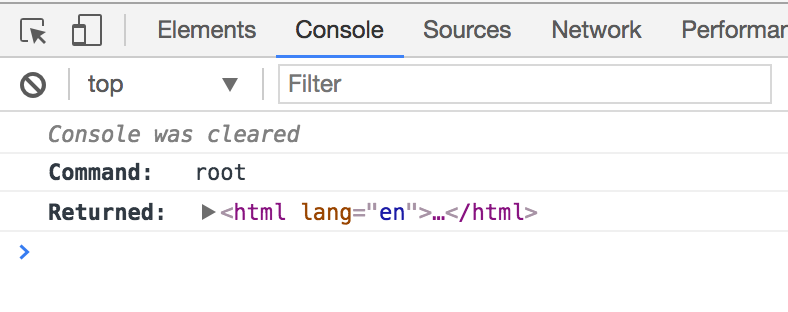root
Get the root DOM element.
Syntax
cy.root()
cy.root(options)
Usage
Correct Usage
cy.root() // Yield root element <html>
cy.get('nav').within(($nav) => {
cy.root() // Yield root element <nav>
})
Arguments
options (Object)
Pass in an options object to change the default behavior of .root().
| Option | Default | Description |
|---|---|---|
log | true | Displays the command in the Command log |
timeout | defaultCommandTimeout | Time to wait for cy.root() to resolve before timing out |
Yields
cy.root() yields the root DOM element.
The root element yielded is <html> by default. However, when calling .root()
from a .within() command, the root element will point
to the element you are "within".
cy.root() is a query, and it is safe to chain further commands.
Examples
HTML
Get the root element
cy.root() // yields <html>
Within
Get the root element in a .within() callback function
cy.get('form').within(($form) => {
cy.get('input[name="email"]').type('[email protected]')
cy.get('input[name="password"]').type('password')
cy.root().submit() // submits the form yielded from 'within'
})
Rules
Requirements
cy.root()requires being chained off ofcy.
Assertions
cy.root()will automatically retry until all chained assertions have passed
Timeouts
cy.root()can time out waiting for assertions you've added to pass.
Command Log
Get root element
cy.root().should('match', 'html')
cy.get('.query-ul').within(() => {
cy.root().should('have.class', 'query-ul')
})
The commands above will display in the Command Log as:

When clicking on the root command within the command log, the console outputs
the following:
